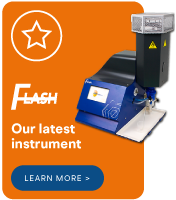An introduction to Flame photometry
- The BWB Team
- May 18, 2023
- 2 min read
Updated: Oct 12, 2023

Flame photometry, a technique pioneered by Robert Bunsen and Peter Desaga in the 18th century, has stood the test of time as a valuable tool in scientific analysis. By producing a colourless flame and observing the colour emitted by heated substances, Bunsen and Desaga were able to create a unique spectrum for each substance. This early form of spectroscopy laid the foundation for further advancements in the field, which has since evolved into a sophisticated and powerful scientific discipline.
While spectroscopy has made remarkable strides, it has also become increasingly expensive; particularly for routine laboratory testing that doesn't require its full capabilities. Enter the flame photometer—a cost-effective alternative with numerous applications in biology labs, industry, and wastewater treatment plants, to name a few. It excels in the rapid identification of Group I and Group II alkaline and alkaline earth metals such as sodium, potassium, lithium, barium, and calcium.
The detection of these metals in blood can provide critical insights into nutritional deficiencies and medical conditions. In the food industry, flame photometry enables the quantification of nutrients, ensuring they align with label declarations, while in pharmacology; it serves as a valuable quality control measure.
Compared to its more complex counterparts like gas chromatographs or spectroscopes, flame photometers boast significantly lower operational costs—often just a few pennies per test. Moreover, they offer impressive testing speed, limited only by the automation or the efficiency of the lab technician, potentially reaching up to 120 samples per hour. In contrast, a single sample analysed using gas chromatographs or spectroscopes could demand an hour of setup time, utilise numerous consumables, and be up to 120 times slower.
When precision and a broad range of testable materials are paramount, sophisticated instruments have their place. However, for continuous process monitoring or swift medical results, flame photometry emerges as the clear winner.
To embark on flame photometry, operators can easily acquire the necessary skills in just a single day of training. You'll need a Flame Photometer; the best are equipped with an internal air compressor for the most stable flame conditions. Additionally, access to compressed propane fuel (easily obtained and reasonably safe), proper placement for safe heat dissipation, and effective ventilation to eliminate combustion by-products are essential.
Other consumables required include de-ionized (DI) water, control samples containing the desired test material for proper machine configuration, and sample containers. This process is cost-effective, providing consistent and reliable results, and boasts impressive throughput capabilities, making it a potentially profitable service to offer.
In summary, if you seek an easy, economical, and efficient method to obtain precise results, flame photometry is the answer. If you're looking to add a low-cost, high-profit dimension to your laboratory, this technique may be a perfect fit.
For more information or any inquiries, please don't hesitate to reach out to us. We are eager to address your questions and assist you in getting started with flame photometry!






